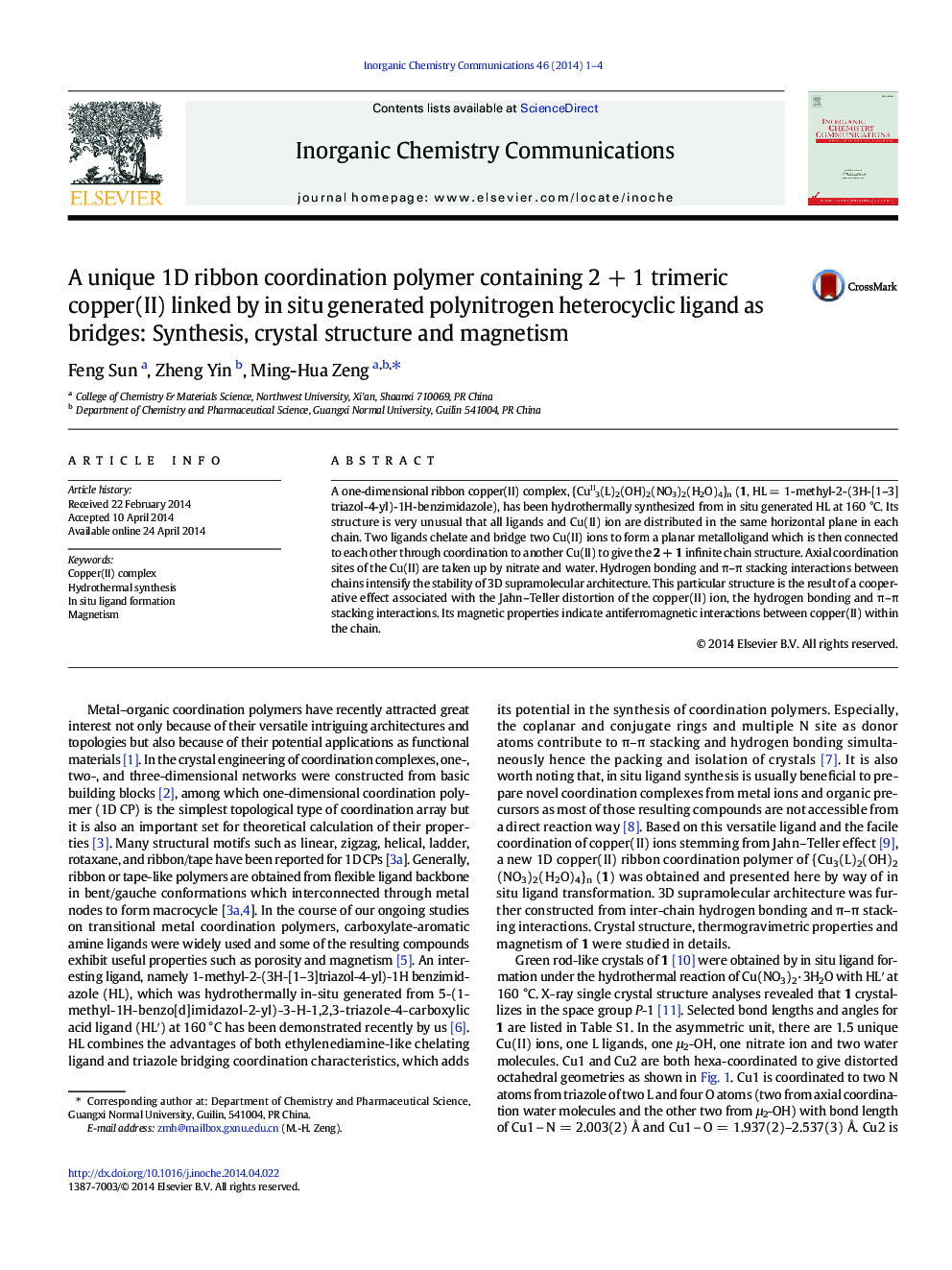| Article ID | Journal | Published Year | Pages | File Type |
|---|---|---|---|---|
| 1303555 | Inorganic Chemistry Communications | 2014 | 4 Pages |
•A 1D ribbon {CuII3(L)2(OH)2(NO3)2(H2O)4}n was synthesized and characterized.•The in situ ligand decarboxylation is crucial for the construction of 1.•The magnetic properties of 1 are measured and analyzed in detail.
A one-dimensional ribbon copper(II) complex, {CuII3(L)2(OH)2(NO3)2(H2O)4}n (1, HL = 1-methyl-2-(3H-[1–3]triazol-4-yl)-1H-benzimidazole), has been hydrothermally synthesized from in situ generated HL at 160 °C. Its structure is very unusual that all ligands and Cu(II) ion are distributed in the same horizontal plane in each chain. Two ligands chelate and bridge two Cu(II) ions to form a planar metalloligand which is then connected to each other through coordination to another Cu(II) to give the 2 + 1 infinite chain structure. Axial coordination sites of the Cu(II) are taken up by nitrate and water. Hydrogen bonding and π–π stacking interactions between chains intensify the stability of 3D supramolecular architecture. This particular structure is the result of a cooperative effect associated with the Jahn–Teller distortion of the copper(II) ion, the hydrogen bonding and π–π stacking interactions. Its magnetic properties indicate antiferromagnetic interactions between copper(II) within the chain.
Graphical abstractA 1D coordination polymer with 2 + 1 motif, {CuII3(L)2(OH)2(NO3)2(H2O)4}n (1, HL = 1-methyl-2-(3H-[1–3]triazol-4-yl)-1H-benzimidazole), was synthesized under hydrothermal reaction coupling with crucial in situ ligand decarboxylation. 3D supramolecular architecture was further stabilized by hydrogen bonding and π–π interactions between chains. Magnetic measurement and fitting indicate antiferromagnetic interactions between copper(II) ions within the chain.Figure optionsDownload full-size imageDownload as PowerPoint slide
